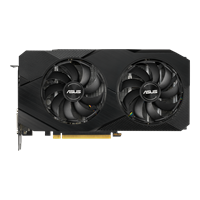Find your perfect match
compare up to 4 products
Compare details
Download pdf
Copy link
Graphic Engine
Radeon RX 6600 XT
NVIDIA® GeForce GTX 1660 Ti
Bus Standard
PCI Express 4.0
PCI Express 3.0
OpenGL
OpenGL®4.6
OpenGL®4.6
Video Memory
8GB GDDR6
6GB GDDR6
Engine Clock
OC mode : up to 2607 MHz (Boost Clock)/up to 2402 MHz (Game Clock)
Gaming mode : up to 2593 MHz (Boost Clock)/up to 2382 MHz (Game Clock)
OC Mode - GPU Boost Clock : 1800 MHz , GPU Base Clock : 1530 MHz
Gaming Mode (Default) - GPU Boost Clock : 1770 MHz , GPU Base Clock : 1500 MHz
CUDA Core
1536
Stream Processors
2048
Memory Speed
16 Gbps
12002 MHz
Memory Interface
128-bit
192-bit
Resolution
Digital Max Resolution 7680 x 4320
Digital Max Resolution 7680 x 4320
Interface
Yes x 1 (Native HDMI 2.1)Yes x 3 (Native DisplayPort 1.4a)HDCP Support Yes (2.3)
Yes x 1 (Native DVI-D)Yes x 2 (Native HDMI 2.0b)Yes x 1 (Native DisplayPort 1.4)HDCP Support Yes (2.2)
Maximum Display Support
4
4
NVlink/ Crossfire Support
Yes
No
Accessories
1 x Collection Card
1 x Speedsetup Manual
Yes x 1
Software
ASUS GPU Tweak II & Drivers: please download all software from the support site.
ASUS GPU Tweak II & Drivers: please download all software from the support site.
Dimensions
243 x 134 x 49 mm
9.6 x 5.3 x 1.9 inch
9.53 " x 5.12 " x 2.09 " Inch
24.2 x 13 x5.3 Centimeter
Recommended PSU
500W
450W
Power Connectors
1 x 8-pin
1 x 8-pin
Slot
2.5 Slot
2.7 Slot
AURA SYNC
RGB
Note
* Our wattage recommendation is based on a fully overclocked GPU and CPU system configuration. For a more tailored suggestion, please use the “Choose By Wattage” feature on our PSU product page: https://rog.asus.com/event/PSU/ASUS-Power-Supply-Units/index.html
* Crossfire Support for DirecX® 12 and Vulkan®
* ‘Game Clock’ is the expected GPU clock when running typical gaming applications, set to typical TGP (Total Graphics Power). Actual individual game clock results may vary.
* ‘Boost Clock’ is the maximum frequency achievable on the GPU running a bursty workload. Boost clock achievability, frequency, and sustainability will vary based on several factors, including but not limited to: thermal conditions and variation in applications and workloads.

